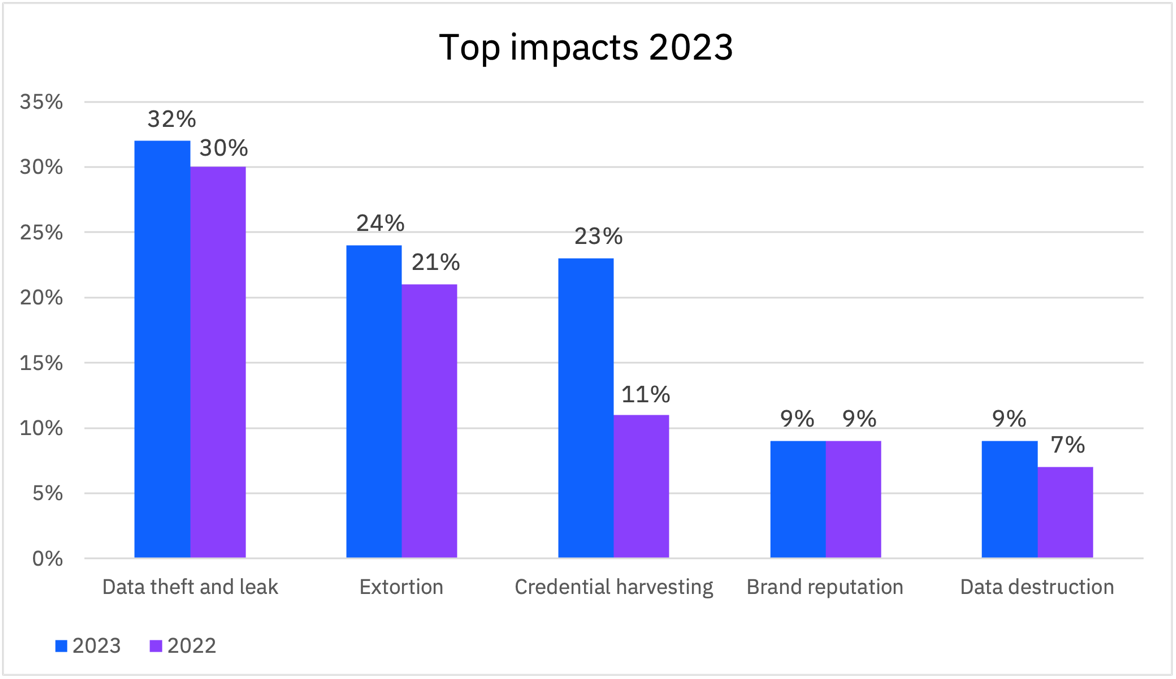The Evolution of Cyber Threats: Insights from IBM X-Force
A recent report from IBM X-Force highlights a shift in the cyber threat landscape, with a decline in ransomware attacks as threat actors turn towards infostealing tactics. The report, based on the analysis of over 150 billion security events daily across 130 countries, sheds light on the emerging trends in cybersecurity.
Key Findings from the 2024 Threat Index Report:
-
Ransomware Decline: While ransomware attacks have decreased by 11.5%, there is a notable increase in attacks leveraging valid credentials, up by 71%.
-
Infostealing on the Rise: The emergence of new infostealers has been observed, with a 32% increase in data theft and leak attacks, offsetting the decline in encryption ransomware incidents.
-
Regional Targeting: Europe remains the most targeted region, accounting for 32% of all cyber attacks globally.
-
Focus on Critical Infrastructures: Nearly 70% of cyber attacks globally target critical infrastructures, underscoring the significance of safeguarding vital systems.
Changing Tactics in Cyber Extortion:
The report delves into the evolving tactics of cybercriminals, noting a transition from traditional ransomware to data theft and leak strategies. This shift is attributed to the growing reluctance of companies to pay decryption ransoms, prompting attackers to resort to data exfiltration for extortion purposes.
Credential Abuse and Stealthier Attacks:
A significant 71% increase in attacks using valid credentials has been identified, with attackers exploiting legitimate accounts as the primary entry point into victim environments. This trend aligns with the move towards stealthier data exfiltration techniques over overt encryption ransom demands.
Geopolitical Impacts on Cyber Activity:
The report also addresses the influence of geopolitical tensions on cyber warfare, highlighting the escalation of cyberwarfare activities amidst global conflicts. State-affiliated groups, such as the IT Army of Ukraine, are actively engaged in cyber operations, amplifying the complexity of the threat landscape.
Emerging AI Threat Landscape:
While the imminent threat posed by malicious AI technologies is acknowledged, the report indicates a lack of confirmed instances in current malicious campaigns. However, the proliferation of AI-related discussions in the cyber underworld suggests a growing interest among cybercriminals.
Anticipating Future Threats:
Looking ahead, IBM X-Force emphasizes the need for vigilance in securing AI/ML models, particularly in the context of supply chain attacks. As the cyber threat landscape continues to evolve, organizations must proactively address vulnerabilities in AI technologies to mitigate potential risks.
In conclusion, the X-Force Threat Index provides valuable insights into the evolving cyber threat landscape, spanning from traditional ransomware attacks to the emerging challenges posed by AI-driven threats. By staying informed and adapting to these evolving trends, organizations can enhance their cybersecurity posture and effectively mitigate cyber risks.










